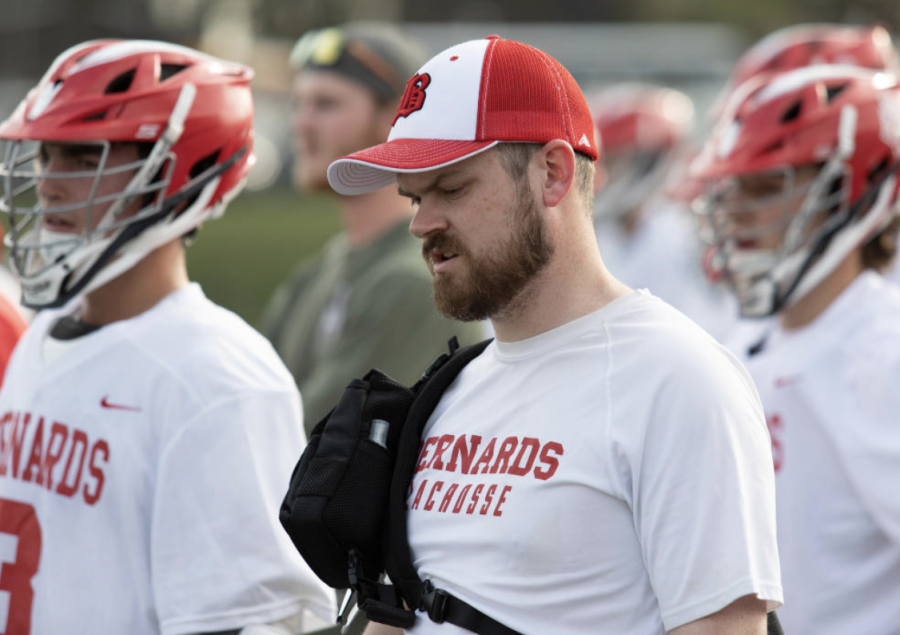Bernards High School offers twenty-one different sports across three seasons. Each sport varies in rules, regulations, and physicality. However, one thing they all have in common is the risk of injury. No matter what sport is being played, there is always the possibility of injury, and there needs to be someone there to help prevent these injuries or treat them if they are to happen. That is the job of the athletic trainer.
March is National Athletic Training Month, a month dedicated to “[spreading] awareness about the important work of athletic trainers,” according to the National Athletic Trainers Association.
“As the athletic trainer we have five pillars,” said James Horan, the athletic trainer at Bernards. “Prevention of injuries, first aid, evaluation, and if need to refer them (the athlete) out for additional medical services, and rehabilitation.”
These pillars are outlined by the National Athletic Trainers Association (NATA). The first pillar is “Injury and Illness Prevention and Wellness Promotion.” This pillar stresses the importance of preparation, and the promotion of treatments and behaviors to ensure athletes do not get injured. This pillar involves “taping, modifying warm up routines, and putting in exercises and strength programs to try to prevent injuries”, said James.
The second and third pillars are “Examination, Assessment and Diagnosis” and “Immediate and Emergency Care.” These pillars involve diagnosing a potential medical issue on the scene of the injury or illness, and determining the course of action for said medical issue. According to the NATA, “This immediate access to health care improves patient outcomes, reduces time away from school or work and minimizes unnecessary trips to the emergency department.”
“Using CPR, taking care of blood, dealing with broken bones, getting emergency services like an ambulance and dealing with cervical or spinal issues” are all responsibilities that come with administering first aid on the scene of an emergency, James said.
The fourth pillar is “Therapeutic Intervention”, which involves prescribing a rehabilitation plan for the athlete in order to get back to playing their sport, and the fifth pillar is “Health Care Administration.” This pillar involves potential referrals to outside doctors that are in the best interest of the patient.
Athletic trainers have to deal with potential injuries everyday, and preparing for any situation is key. With the chance of there being a potentially life threatening injury, there always needs to be a plan.
“The big thing is, first, having an emergency action plan,” said James. “In it, it goes over that, if something serious happens, who’s doing what?” No matter the size of the training staff, “everyone has a job.”
The importance of an athletic trainer can go understated. Having someone who is able to deal with any medical situation is a necessity. March is the month to really appreciate what trainers do for athletes, and how helpful they are to an athletic program. Many athletes owe their careers to athletic trainers, and they deserve all the recognition.












